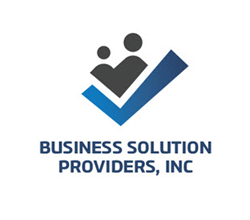When evaluating a potentially new asset, a finance officer looks at the value the asset brings to the company. You might calculate the item’s return on investment based on documentable costs and revenue streams – what is the life of the asset? What amount of revenue will it direct return? How is it to be depreciated, and what does it add to the bottom line? These are valuable considerations when acquiring a physical asset like a vehicle, equipment or a building.
Software is much harder to value. It’s not a tangible item, in a historical or practical sense. There are depreciation tables for it, but for how long will it continue to truly bring value? And software takes people to run it. How many people will need to interact with it; what departments and roles, what’s training is involved, and how do you quantify a tangible amount the program(s) add to either revenue streams or the value of the company?
These are all difficult questions that honestly, in most cases, cannot be quantified or determined in the pre-purchase stage. A company usually seeks out a company-wide software solution like an, ‘Enterprise Resource Planning’ or ERP system simply because they know their current ‘processes’ have stopped working either because growth or outdated technology hampers moving forward. They intrinsically know they are being inefficient, and that there has to be a better way to get done what they’re trying to do, but they’re unclear on what it will take to improve performance.
Take inventory inaccuracy as an example. Some of the costs of inaccuracy in improperly managing inventory include:
- Lost sales
- Excess production
- Low productivity
- Backorders
- Excessive expediting
- High inventory levels
- Shortages
- Missed schedules
- Late delivery
- Excess freight costs
- High levels of obsolescence
Business owners and managers understand from an operational standpoint these areas are costing them money. They see the inventory stacking up, or hear from their customers about late deliveries. It’s usually at this point that they seek out professional help in determine what software might help them improve operations. They may reach out to you, to their CPA or fellow colleague in the business.
If you’re not familiar with the features and functions of ERP systems, the task of selecting a software solution of this type can be daunting. Enterprise Resource Planning software covers ALL functional areas of the business, from procurement and purchasing, to Accounts Receivable, and every department in between. So a lot of due diligence needs to go into the research of selecting the right product. Here are some things to consider when choosing among the available software:
- What is being solved for? Is there just one pain point, or are all of the processes, company-wide, suffering?
- Do you need an ‘all-in-one’ system, or can you put several, best-of-breed programs together to achieve the best results? QuickBooks can serve as the financial back office, and integrates with a variety of third-party products for operations depending upon the business model.
- Is the business inventory-centric, manufacturing-centric, or a combination of both? Is it primarily distribution or manufacturing? Business software tends to be developed for each of these two camps, so look for the ones that are right for your business model.
- Will desktop software or online, SaaS software better serve the company model? Online, ERP and now Materials Requirements Planning or MRP software has greatly advanced in the last couple of years. So, if your Internet infrastructure can handle it, you might to look at going online for the solution.
And, of course, there’s the cost. But here’s the surprising thing: with most of the companies we’ve approached over the years, cost is usually way down the list in terms of considerations. Usually, it’s about solving for operational bottlenecks or process inefficiencies. Management is experiencing pain, and they want to solve for it. The best solution for that is worth almost any price to them.
However, when you do the cost analysis, look at the product purchase, software maintenance fees and implementation costs for what they are:an investment. Too many times, companies think of the costs involved as an expense, and recoil from the upfront monies involved. Go back to the list of inventory inaccuracies listed above. How much would your company save by reducing those costs by having a centralized system in place to avoid these costs in the first place? We have found that companies which invest in ERP systems, usually recoup their ROI within 12-18 months. The intangibles of customer satisfaction, worker productivity and brand enhancement are some more of the savings described in the difficult calculations mentioned at the beginning of this article.
Will an ERP system really bring your company value? Almost indubitably, Yes. As a finance or accounting professional, will you be able to estimate or even calculate those costs savings after purchase? For much of it, No. There are too many intangibles. But the company as whole will improve, and that leads to the bottom line, no matter how you calculate it.

